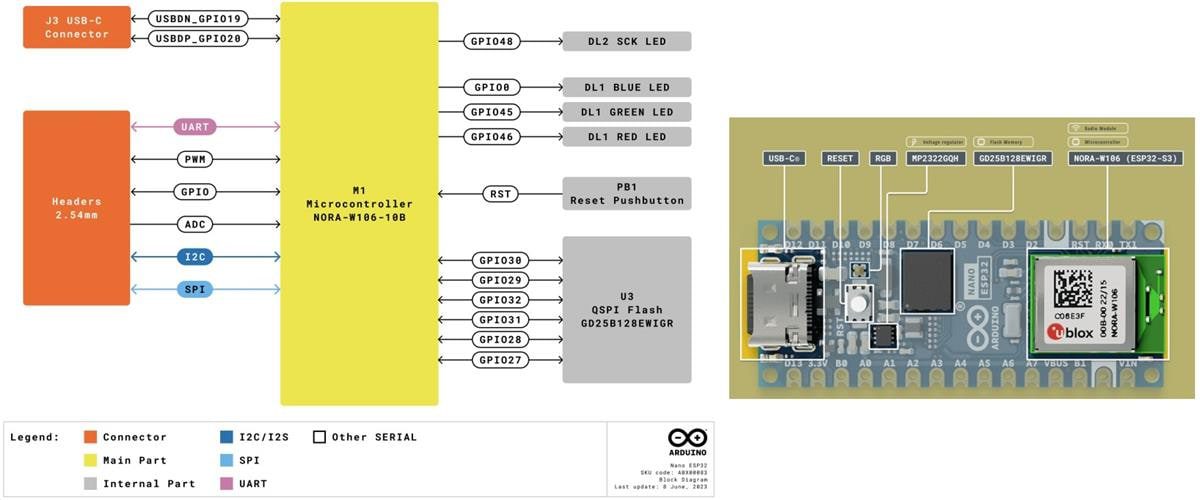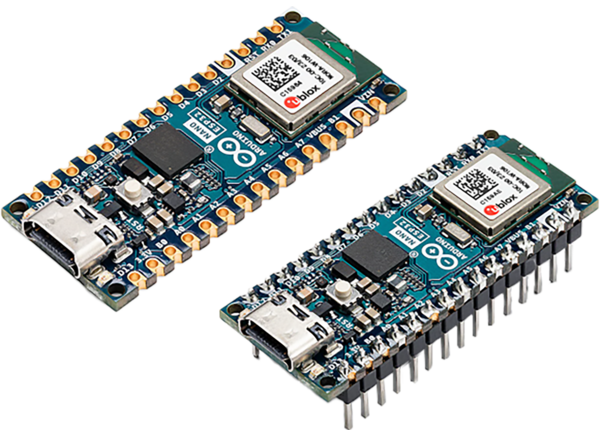- support@husseinkey.com
- livechat
Arduino Nano ESP32 Boards (with and without headers) are Nano form-factor boards based on the Espressif ESP32-S3 SoCs that are embedded on the u-blox® NORA-W106-10B modules. These modules support Wi-Fi® and BLUETOOTH® Low Energy (LE), with amplified communication through built-in antennas. The 32-bit Xtensa® LX7 CPU supports clock frequencies at up to 240MHz and provides native support for debugging via the USB-C® connector. The Nano ESP32 boards are compatible with the Arduino IoT Cloud and facilitate MicroPython. The popular Nano form factor makes the Nano ESP32 boards compatible with many hardware accessories. All these make the boards versatile and ideal for getting started with IoT developments.










